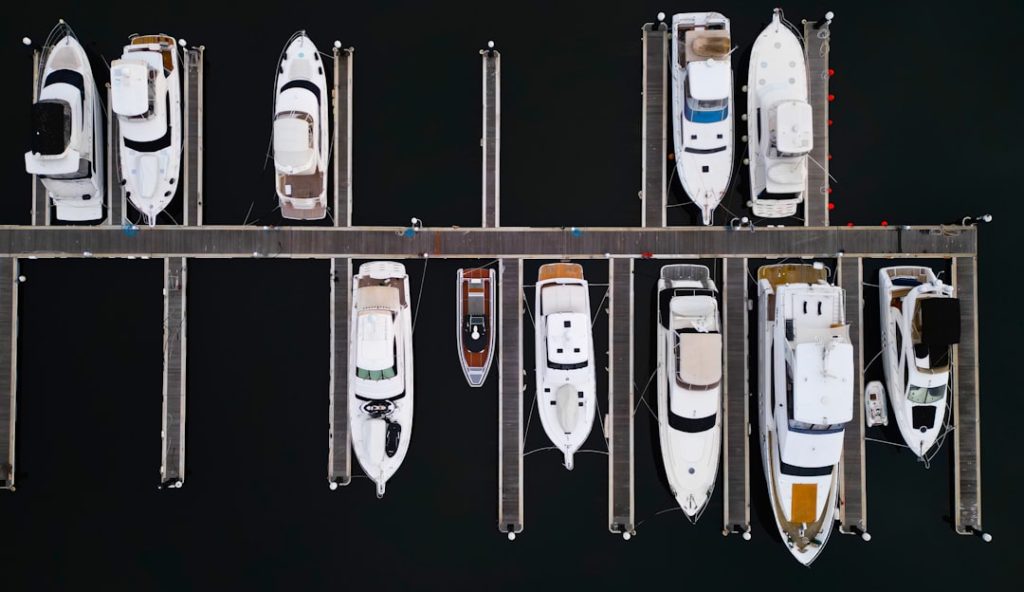Jet drive boats represent a unique and innovative approach to marine propulsion, distinguishing themselves from traditional outboard and inboard motor systems. Instead of using a propeller to generate thrust, jet drive boats utilize a jet of water expelled from the back of the vessel, which creates forward motion. This system not only enhances performance but also offers several advantages in terms of safety and maneuverability.
The concept of jet propulsion in boats can be traced back to the mid-20th century, with significant advancements leading to the modern designs we see today. The appeal of jet drive boats extends beyond their propulsion method; they are often associated with high-speed performance and agility on the water. This makes them particularly popular among thrill-seekers and water sports enthusiasts.
The ability to navigate shallow waters and tight spaces without the risk of damaging a propeller adds to their allure. As recreational boating continues to evolve, jet drive technology has become a staple in various types of vessels, from personal watercraft to larger luxury yachts.
Key Takeaways
- Jet drive boats offer enhanced maneuverability and shallow water capability.
- They are popular for recreational use, rescue operations, and watersports.
- Key factors when buying include engine power, hull design, and intended use.
- Regular maintenance is essential to ensure optimal performance and longevity.
- Safe operation involves understanding jet propulsion mechanics and following safety guidelines.
Advantages of Jet Drive Boats
One of the most significant advantages of jet drive boats is their ability to operate in shallow waters. Traditional propeller-driven boats can be limited by their draft, which often requires deeper water for safe navigation. In contrast, jet drive boats can typically operate in depths as shallow as a few inches, making them ideal for exploring rivers, lakes, and coastal areas where water levels fluctuate.
This capability opens up a world of possibilities for boaters who wish to access remote or less-traveled waterways. Another key benefit is the enhanced safety that jet drive systems provide. Since there are no exposed propellers, the risk of injury to swimmers or marine life is significantly reduced.
This feature is particularly appealing for families with children or those who frequently anchor in busy areas. Additionally, the maneuverability of jet drive boats allows for quick turns and agile handling, which can be crucial in emergency situations or when navigating crowded marinas. The combination of shallow draft and safety features makes jet drive boats an attractive option for both novice and experienced boaters alike.
Popular Jet Drive Boat Models

The market for jet drive boats is diverse, with numerous manufacturers producing models that cater to various preferences and needs. One standout model is the Yamaha 242X E-Series, a high-performance jet boat that combines luxury with power. Equipped with twin 1.8-liter supercharged engines, this boat can reach impressive speeds while providing ample space for passengers and gear.
Its innovative design includes features such as a wake tower for water sports enthusiasts and a spacious cockpit for entertaining. Another notable entry is the Sea-Doo Switch, a versatile pontoon-style jet boat that has gained popularity for its unique modular design. The Switch allows owners to customize their layout according to their specific needs, whether for fishing, lounging, or hosting gatherings.
With a powerful Rotax engine and a shallow draft, it offers both performance and practicality, making it suitable for various water conditions. These models exemplify the range of options available in the jet drive market, catering to different lifestyles and boating activities.
Considerations When Buying a Jet Drive Boat
| Consideration | Description | Metric/Value | Importance Level |
|---|---|---|---|
| Boat Size | Length of the boat affects maneuverability and capacity | 12 – 30 feet | High |
| Engine Power | Determines speed and performance of the jet drive | 60 – 300 HP | High |
| Fuel Efficiency | Fuel consumption rate impacts operating cost | 3 – 8 gallons per hour | Medium |
| Draft Depth | Minimum water depth required to operate safely | 6 – 12 inches | High |
| Passenger Capacity | Number of people the boat can safely carry | 2 – 10 persons | Medium |
| Hull Material | Material affects durability and weight | Fiberglass, Aluminum, Composite | Medium |
| Maintenance Requirements | Frequency and complexity of upkeep needed | Low to Moderate | High |
| Intended Use | Recreational, fishing, rescue, or commercial use | Varies | High |
| Safety Features | Inclusion of life jackets, emergency shut-off, etc. | Standard to Advanced | High |
| Price Range | Cost of the boat excluding additional equipment | 15,000 – 100,000 | Medium |
When contemplating the purchase of a jet drive boat, several factors warrant careful consideration to ensure that the chosen vessel aligns with your needs and preferences. First and foremost is the intended use of the boat. Are you looking for a high-speed craft for water sports, or do you prefer a more leisurely experience for family outings?
Understanding how you plan to use the boat will help narrow down your options significantly. Budget is another critical aspect to consider. Jet drive boats can vary widely in price based on size, brand, and features.
It’s essential to establish a budget that not only covers the initial purchase but also accounts for ongoing expenses such as insurance, maintenance, fuel, and storage. Additionally, prospective buyers should research different manufacturers and models to compare warranties and customer service reputations. This diligence can lead to a more informed decision and ultimately enhance your boating experience.
Maintenance and Care for Jet Drive Boats
Proper maintenance is crucial for ensuring the longevity and performance of jet drive boats. Regular inspections should include checking the impeller and intake grate for debris or damage, as these components are vital for efficient operation. Cleaning the cooling system is also essential; saltwater environments can lead to corrosion if not properly flushed after each use.
Many manufacturers recommend flushing the engine with fresh water after every outing to prevent buildup and maintain optimal performance. In addition to mechanical upkeep, cosmetic care should not be overlooked. Regular cleaning of the hull and interior helps preserve the boat’s appearance and value over time.
Using marine-grade cleaners and protectants can prevent fading and deterioration caused by UV exposure. Furthermore, seasonal maintenance checks are advisable; this includes inspecting electrical systems, battery health, and ensuring that all safety equipment is in good working order. By adhering to a comprehensive maintenance routine, boat owners can enjoy their jet drive vessels with confidence.
Where to Find Jet Drive Boats for Sale

Finding the right jet drive boat involves exploring various avenues where these vessels are sold. One of the most common places to start is through authorized dealerships that specialize in marine products. These dealerships often carry new models from reputable manufacturers and provide valuable insights into features and financing options.
Additionally, they may offer trade-in opportunities for those looking to upgrade from an older vessel. Online marketplaces have also become increasingly popular for buying and selling boats. Websites such as Boat Trader, YachtWorld, and Craigslist feature listings from both private sellers and dealers, allowing buyers to compare prices and specifications easily.
Social media platforms have also emerged as effective tools for connecting with sellers or joining boating communities where members share listings or recommendations. Regardless of the method chosen, thorough research is essential to ensure that you are making a sound investment.
Customizing Your Jet Drive Boat
Customization options for jet drive boats are vast, allowing owners to tailor their vessels to suit personal tastes and functional needs. Many manufacturers offer factory-installed options such as upgraded sound systems, enhanced seating arrangements, or specialized storage solutions designed for specific activities like fishing or water sports. These enhancements can significantly improve the overall experience on the water.
Beyond factory options, aftermarket modifications are also popular among enthusiasts looking to personalize their boats further. This could include adding custom graphics or wraps for aesthetic appeal or installing performance upgrades such as high-efficiency impellers or exhaust systems that enhance speed and sound. Additionally, accessories like wakeboard towers or ski racks can be added to facilitate various water sports activities.
Customization not only enhances functionality but also allows boat owners to express their individuality on the water.
Tips for Operating a Jet Drive Boat Safely
Operating a jet drive boat safely requires an understanding of both the vessel’s capabilities and the surrounding environment. One fundamental tip is to always be aware of your surroundings while navigating; this includes keeping an eye out for other vessels, swimmers, and potential obstacles in the water. Jet drive boats are known for their agility, but this can lead to overconfidence if operators do not remain vigilant.
Another critical safety consideration is understanding how to properly operate the throttle and steering controls. Unlike traditional boats that may have a more gradual response time due to propeller thrust, jet drive boats can accelerate quickly and respond sharply to steering inputs. New operators should practice in open waters before venturing into crowded areas or challenging conditions.
Additionally, wearing life jackets at all times is essential; ensuring that all passengers are equipped with appropriate safety gear can make a significant difference in emergency situations. In conclusion, jet drive boats offer an exciting blend of performance, safety, and versatility that appeals to a wide range of boating enthusiasts. With careful consideration during the purchasing process and ongoing maintenance efforts, owners can enjoy all that these innovative vessels have to offer while ensuring safe and enjoyable experiences on the water.


